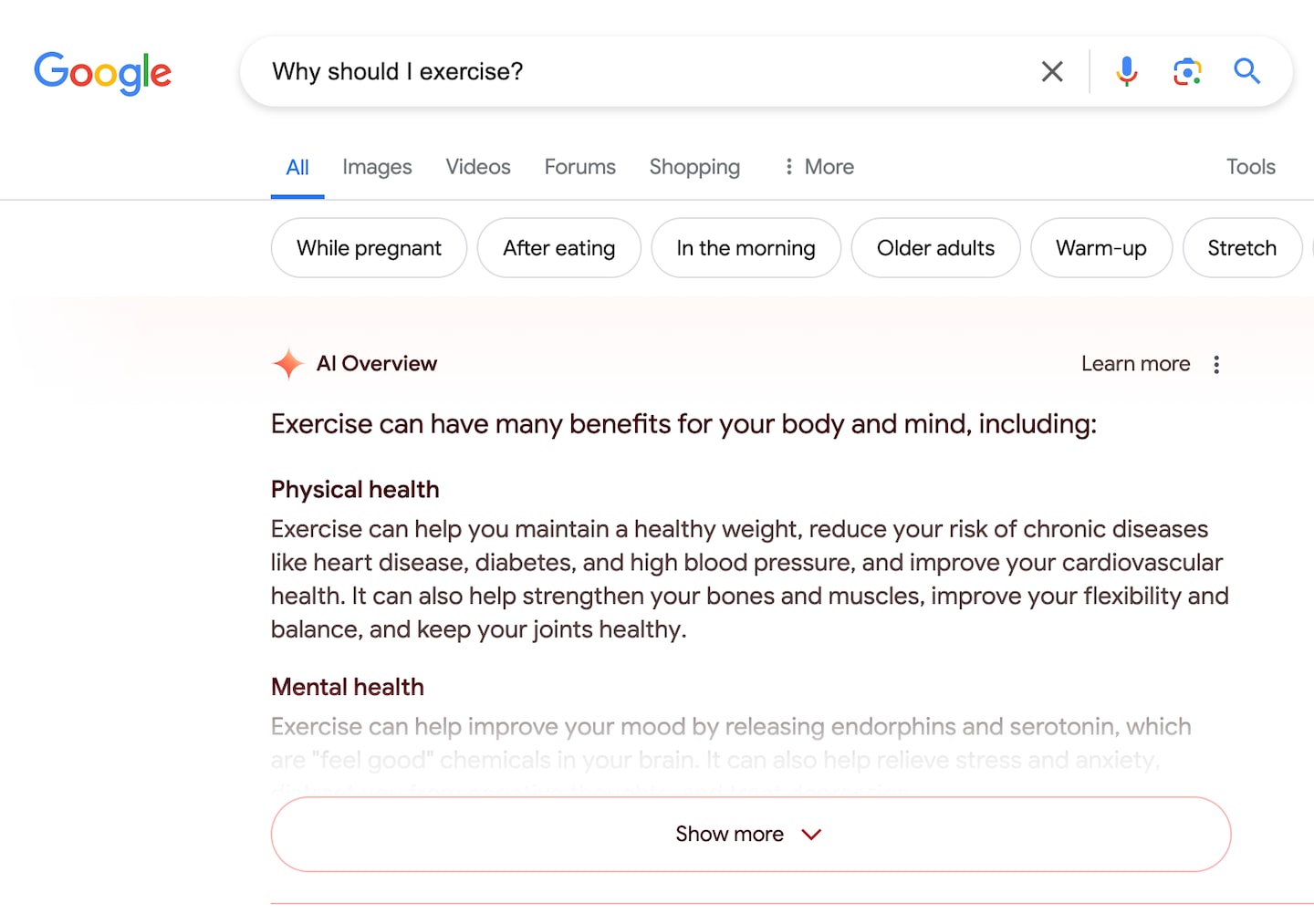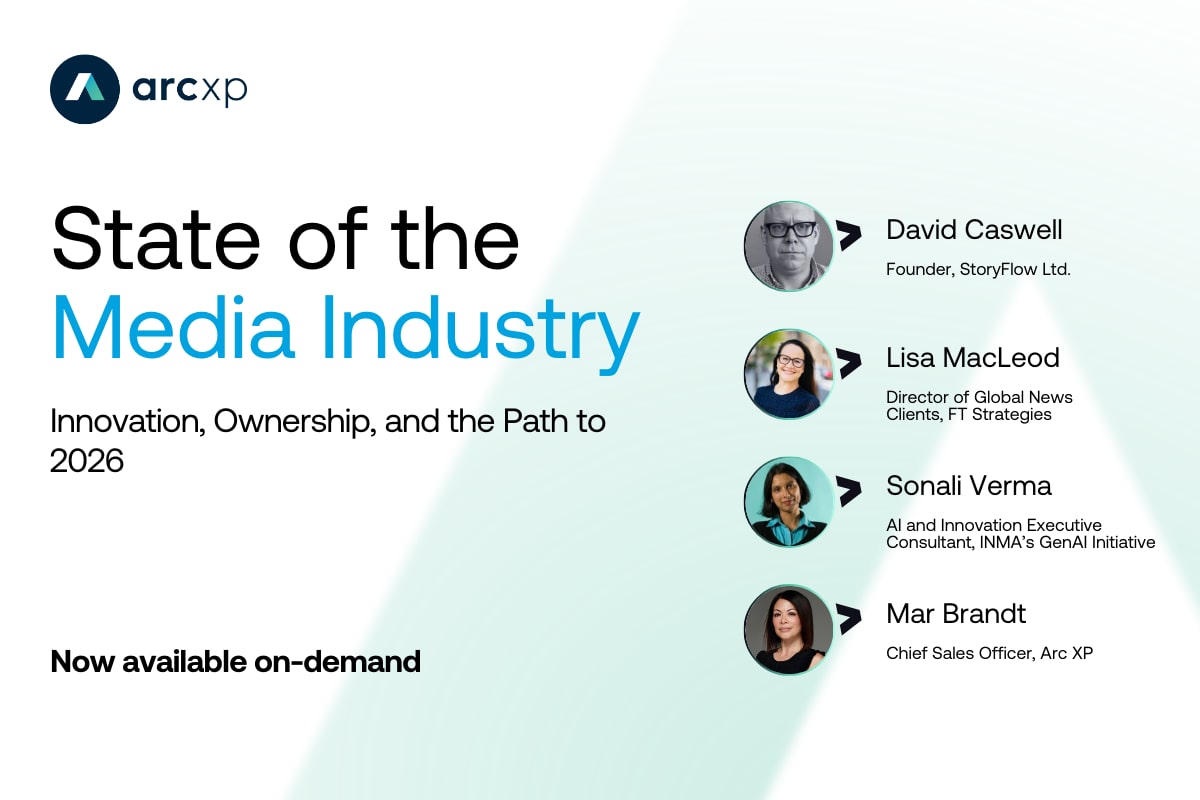Google’s New AI Overviews: Traffic Impact and Strategies for Publishers

To enhance user experience, Google has introduced AI overviews, part of its new Search Generated Experiences (SGE), in its search engine results pages (SERPs). While this innovation promises to deliver concise and immediate answers to users’ queries, it raises significant concerns for digital publishers. Since Google has rolled out this feature, there have been an overwhelming number of accuracy issues and misrepresentation of original content. In addition to these major accuracy issues, by displaying information directly on the search results page, Google is bypassing the need for users to click through to the original content sources.
This development underlines a reality for publishers: Google is not a reliable partner when it comes to sustaining traffic, and relying on volatile traffic sources leaves you vulnerable to losing critical traffic at any moment. As Google continues to refine its algorithms, publishers must adapt to these changes while safeguarding against disruptions to their traffic sources. In this article, we consulted with Nils Ove Haland Riise, sales director for EMEA at Arc XP, who provided insights into how AI overviews will impact publishers and how top publishers are combatting this challenge.
Understanding Google’s AI overviews
Operating on the premise that “Google will do the Googling for you,” AI overviews are designed to provide quick, precise answers to user queries, no matter how complex, by synthesizing information from various sources. Leveraging advanced natural language processing (NLP) algorithms, this feature extracts and condenses key points from web pages, displaying them above the blue links and featured snippets on the search engine results page.

While this technology undoubtedly enhances user convenience by reducing the time and effort needed to find information, it simultaneously diminishes the incentive for users to visit the actual websites. Despite real concerns about misinformation and reliability, this technology represents the future of search, redefining how users access information.
The impact on publisher traffic
Reduced click-through rates:
According to a report from Digiday and Arc XP, “State of Publisher Traffic: Framing the Evolution and Impact of Search and Referral,” 99% of survey respondents express concern about the impact of AI on search and referral traffic, and their concerns are valid. While it’s too soon to see direct effects, it’s predicted that the immediate consequence of AI overviews is a significant reduction in click-through rates (CTR) for publishers. As users find the information they need directly on the search results page, the likelihood of them clicking through to the original source decreases dramatically.
For publishers, this translates to a decline in website traffic, which is often the lifeblood of their online presence. Adweek’s study further highlights the gravity of this issue, indicating that brands are at risk of losing up to 36% of total organic traffic to AI overviews.
This drastic decrease in traffic can have far-reaching implications for publishers. Reduced CTR means fewer visitors, which directly affects not only the visibility and reach of content but also the overall engagement levels on publisher sites. As users increasingly get their answers from the search results page itself, the traditional model of attracting visitors through search engine clicks is being fundamentally challenged.
Decline in advertising revenue
The reduction in traffic has a direct impact on advertising revenue. Many publishers rely heavily on ad impressions and clicks to generate income. Fewer visitors mean fewer ad views and clicks, leading to a potential drop in revenue. According to an article from Digiday, it’s estimated that AI Overviews could cut visits by as much as 25% and cause the industry to lose $2 billion in annual ad revenue. However, even that may be on the very low end. This is a significant concern, particularly for smaller publishers and those whose business models depend heavily on advertising.
To help prevent decline in revenue, some media organizations are adapting through strategic AI partnerships. OpenAI has signed content and product deals with News Corp, Vox Media, and The Atlantic. These collaborations give OpenAI access to news archives, enhancing its AI models, while providing media firms new opportunities for product development and revenue. Vox Media plans to use OpenAI’s technology for innovative products, and The Atlantic is exploring new features via its experimental microsite, Atlantic Labs. These partnerships show how media organizations can leverage AI to enhance their offerings in a rapidly evolving landscape.
Adapting your traffic generation strategy
In an environment where Google has repeatedly demonstrated its unpredictability and lack of allegiance to publishers, making adjustments to take control of your content strategy is paramount. By adopting a proactive approach, publishers not only address the current challenge posed by AI overviews but also prepare themselves to navigate any future algorithm changes effectively. Here’s what some top publishers are considering to overcome these challenges:
Focus on in-depth and exclusive content:
Creating content that is difficult for AI to replicate, such as in-depth analysis, opinion pieces, and highly specialized niche topics, can help retain a dedicated audience. Content that requires expert knowledge or unique insights is less likely to be fully captured by AI overviews.
Utilize paywalls and subscriptions:
By placing premium content behind paywalls, publishers can offer something unique that isn’t freely available through search engines. This approach can also help build a loyal subscriber base that values the depth and quality of the content.
Optimize for featured snippets and rich results:
Publishers should also aim to optimize their content for featured snippets and other rich results. While this might seem counterintuitive, being featured prominently in these areas can still drive significant visibility and some level of traffic, particularly if the summary includes a link that encourages further reading.
Prioritize direct traffic:
To establish a robust traffic foundation, publishers must pivot towards more direct strategies. Unlike organic search traffic, direct traffic is not influenced by search engine algorithms. This provides a level of stability and predictability in your traffic sources. As highlighted in Digiday and Arc XP’s state of publisher traffic report, 56% of publishers are now focusing more on driving direct traffic. Here are some effective methods that top publishers are implementing:
- Email Newsletters: Establish direct connections with subscribers by delivering targeted content directly to their inboxes. Unlike search traffic, which can fluctuate due to algorithm changes, newsletters offer a consistent and reliable way to reach and retain readers.
- Owned Podcasts: Create original podcasts that resonate with your audience. Podcasts allow for authentic storytelling and deeper engagement, helping to build a loyal listener base.
- Personalized Homepage and Curated Experiences: Tailor your digital platform to match audience interests, creating a more immersive and personalized experience. This encourages regular visits and strengthens the relationship between the publisher and the reader.
- Push Notifications: Utilize push notifications to deliver timely updates and engaging content directly to users’ devices. This direct communication channel can drive immediate traffic to your app, reducing reliance on volatile search engines. Push notifications keep your audience informed and engaged, fostering loyalty and regular site visits.
By focusing on these strategies, along with leveraging social media and community engagement, publishers can reduce their reliance on search engines. Building a strong, engaged audience that visits the site directly can provide a more stable and reliable source of traffic, helping publishers navigate the challenges posed by AI overviews and maintain their online presence.
Recent resources




